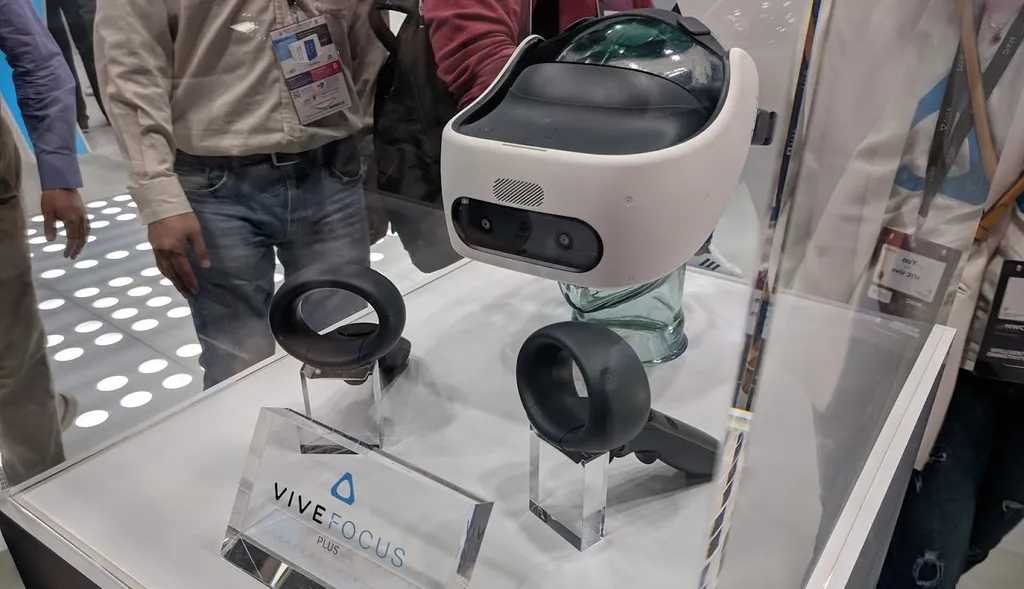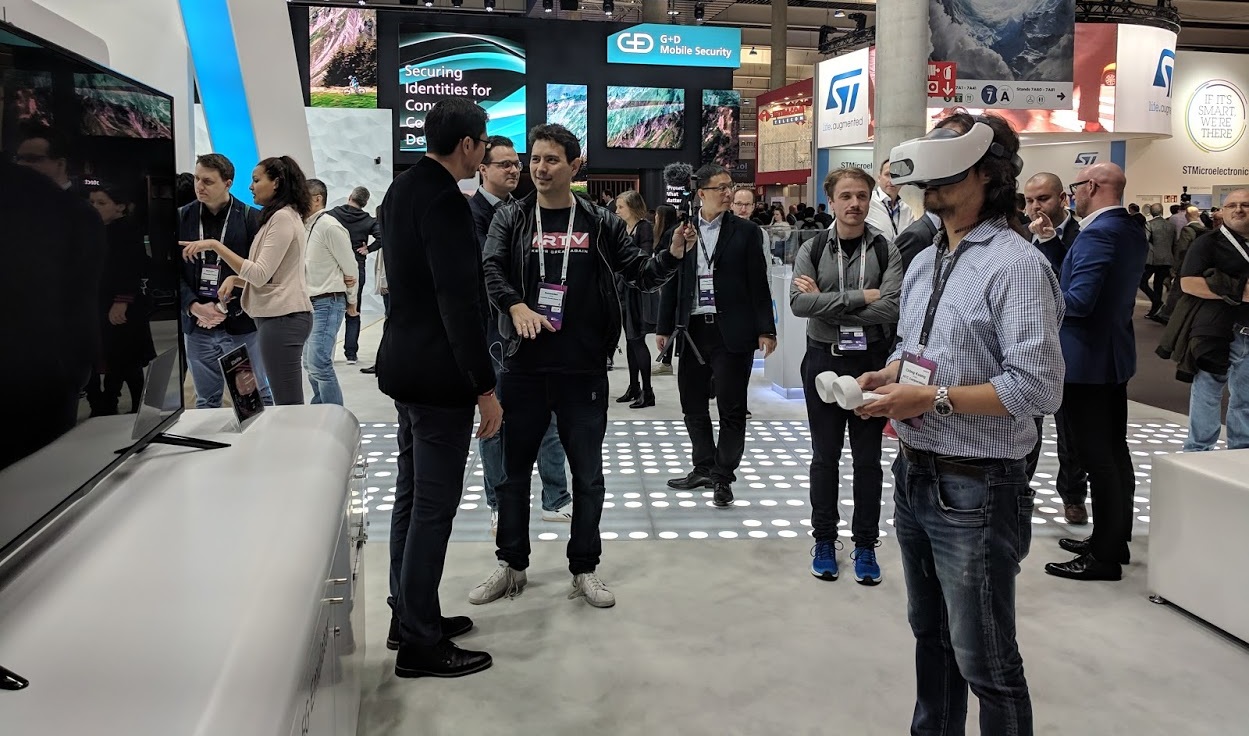I got to HTC Vive’s booth at 10am on the first morning of Mobile World Congress. My first order of the day was an interview with General Manager Dan O’Brien, which took me to around 10:45am. Then I got my hands on HTC’s 5G demo, which used a Vive Focus Plus to stream PC VR. It was now 11am. The booth had been open for two hours. I was ready to go in search of more Focus Plus demos.
The problem is, they were all out of batteries. All three of them.
I had some pretty conflicting experiences with HTC’s new standalone headset at MWC. The trouble is it’s tough to know whether this speaks more to the quality of the headset or the difficulties of demoing inside-out tracking on a busy show floor.
My 5G demo, for instance, seemed quite positive at first glance. As I wrote about in my preview earlier this week, streaming over HTC’s 5G hub added on some noticeable latency, but tracking overall seemed solid. The redesigned headset, meanwhile, was comfortable to wear. According to HTC, Focus Plus also features improved optics. It was hard to see much difference without the old model right next to me. It felt around the same quality as a Vive Pro, either way.
My experience was considerably worse in my other demo, though. Around 20 minutes after finding out all the headset’s batteries were flat I returned to find medical company SimforHealth with a fresh device. The company was showing a medical training app that teaches nurses to change dressings when in a patient’s home.
Things started off fine, as I busied myself teleporting around the house and gathering requested items. Focus Plus’ new six degrees of freedom (6DOF) controllers feel a little cheap compared to most other VR controllers. Tracking was occasionally wobbly, but usable. However, a short while into the piece things got inexplicably worse. I didn’t start to wobble so much as glide until I was in an entirely different part of the room. I started to wrestle with trying to stay in one place as I performed simple tasks like holding my hands out to wash them. This persisted on-and-off for about five minutes. Then the headset told it me had less than 15 percent of its battery left.
Having seen enough, I took the headset off perhaps to find the source of my woes. A SimforHealth representative was standing right in front of me, helpfully making sure no one bumped into me or that I didn’t walk into a wall. As appreciated as his help was, I’m this is likely what was causing havoc on the headset’s front-mounted sensors. A group of visitors huddled right next to me too. That surely didn’t help.
A reasonable explanation, perhaps, but it brings up legitimate concerns about Focus Plus. This is an enterprise headset. It’s likely to be used in situations where people are trying VR for the first time and need to be supervised just like I did. The tracking is much easier to confuse than that of the SteamVR base stations. If the Vive Focus Plus can’t handle an MWC show booth without being strictly monitored, is it really ready for prime time?
I’m also unconvinced that this needed to be a new headset. The original Focus launched in the west just three months ago. HTC had already engineered an add-on solution for the controllers. I had an interesting chat with O’Brien on the nature of the enterprise market this week. All the same, I can’t understand the reasoning for releasing an inferior headset such a short time ago when a better model was clearly already in the works.
The Vive Focus Plus is due to launch in Q2. We don’t have a price just yet. Seeing as the original Focus is $699, we don’t expect it to be cheap.



























